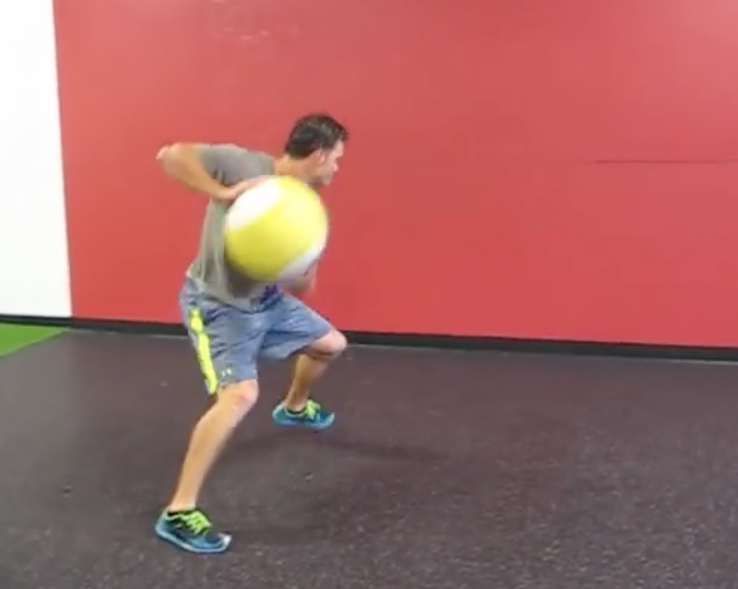
Coaching Cues to Make Your Strength and Conditioning Programs More Effective – Installment 13
It’s time for another installment of my series on coaching cues we utilize at Cressey Sports Performance on a daily basis. Today, I’ll feature some of my favorite medicine ball coaching cues:
1. “Keep the head behind the belly button a bit longer.”
Creating good “separation” is absolutely essential for producing power in rotational sports. This separation occurs when the pelvis rotates toward the target as the torso continues to rotate (or at least stay back) in the opposite direction. In the example of a right-handed pitcher, the pelvis rotates counter-clockwise toward the plate while the torso is still rotating clockwise toward second base. This separation stores elastic energy – but can also predispose athletes to injuries (as I wrote in 2008) if the motion doesn’t come from the right places.
In this regard, one of the biggest mistakes we see is the athlete “leaking” forward at the torso. This is a bad habit to get into in terms of power production (loss of separation), injury risk (can make a pitcher’s arm “late” and subject the elbow and shoulder to undue stress), and effectiveness (hitters can’t stay back to adjust on pitches, pitchers make struggle with “catching up” to find a consistent release point, etc.).
My feeling is that the head goes where the torso tells it to go, so trying to keep the head back a bit longer will force the torso to stay back long enough for the athlete to get sufficient hip rotation to create the ideal stretch.
2. “Make your front leg and back legs work like a slingshot.”
Throwing a medicine ball – whether it’s an overhead or rotational variation – is all about putting good force into the ground on the back leg and then accepting it on the front leg. In the analogy of a slingshot, if the back leg doesn’t create enough eccentric preloading and subsequent force production, it’s like not pulling back hard/far enough on the elastic portion of the slingshot. Athletes usually “get” this really quickly.
What they often fail to recognize is that the front foot has to stiffen up to accept force and – particularly in the case of overhead variations – help to create an effective downhill plane. One of the things I watch for on the front foot is whether athletes “spin out” of their shoes; you’ll actually see some guys roll right over the sides of the sneakers if they don’t stiffen up enough on the front leg to accept all the force that’s being delivered. This is just like having a “limp” front arm when using a slingshot.
In over ten years of coaching these drills, CSP athletes and Royals pitcher Tim Collins is probably the absolute best example of effective “slingshot” force transfer on medicine ball work. He’s got excellent reactive ability and absolute strength/power to create force, but is equally proficient at knowing how to stiffen up at the right time on his front side. I firmly believer that this proficiency plays a big role in his ability to create a great downhill plane and throw one of the best curveballs in baseball even though he’s only 5-7.
3. “Take your hand to the wall.”
This is a cue I blatantly stole from my business partner, Brian Kaplan, who is the best coach I’ve ever seen when it comes to cleaning up medicine ball technique – and also creating context for our pitchers and hitters so that the drills carry over to what they do on the field.
One of the common issues we see with athletes with scoop toss variations is that they use too much wrist and get around the ball. You’ll see the spin on the ball, and it won’t sound as firm when it hits the wall. Effectively, what’s happening is that the athlete is cutting off hip rotation and using the wrist redirecting the ball to the intended target. This causes the athlete to be around the ball instead of through it – so it’s analogous to throwing a bad cutter with a baseball. By encouraging the athlete to take the hand to the wall, the ideal direction of force production is preserved, and we train hip and thoracic rotation more than just compensations at the wrist and hand.



